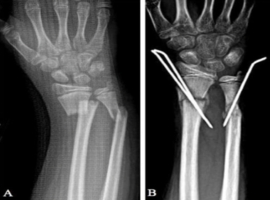Amin Arsalan1* and NL Carayannopoulos2
1University of Texas Medical Branch at Galveston, TX, USA
2Houston Institute for Sports Medicine and Orthopaedics, Houston, TX, USA
*Corresponding author: Amin Arsalan, Department of Orthopaedics, University of Texas Medical Branch at Galveston, TX, USA. E-mail: Arsalan.1Amin@bcm.edu
Received: September 27, 2022; Accepted: October 15, 2022; Published: November 10, 2022
Citation: Arsalan A, Carayannopoulos NL. Induced Osteomyelitis 3 Years after a Closed Both-Bone Forearm Fracture in Pediatric Patient: A Case Report. Case Rep Orthop Surg J. 2022; 1(1): 101.

